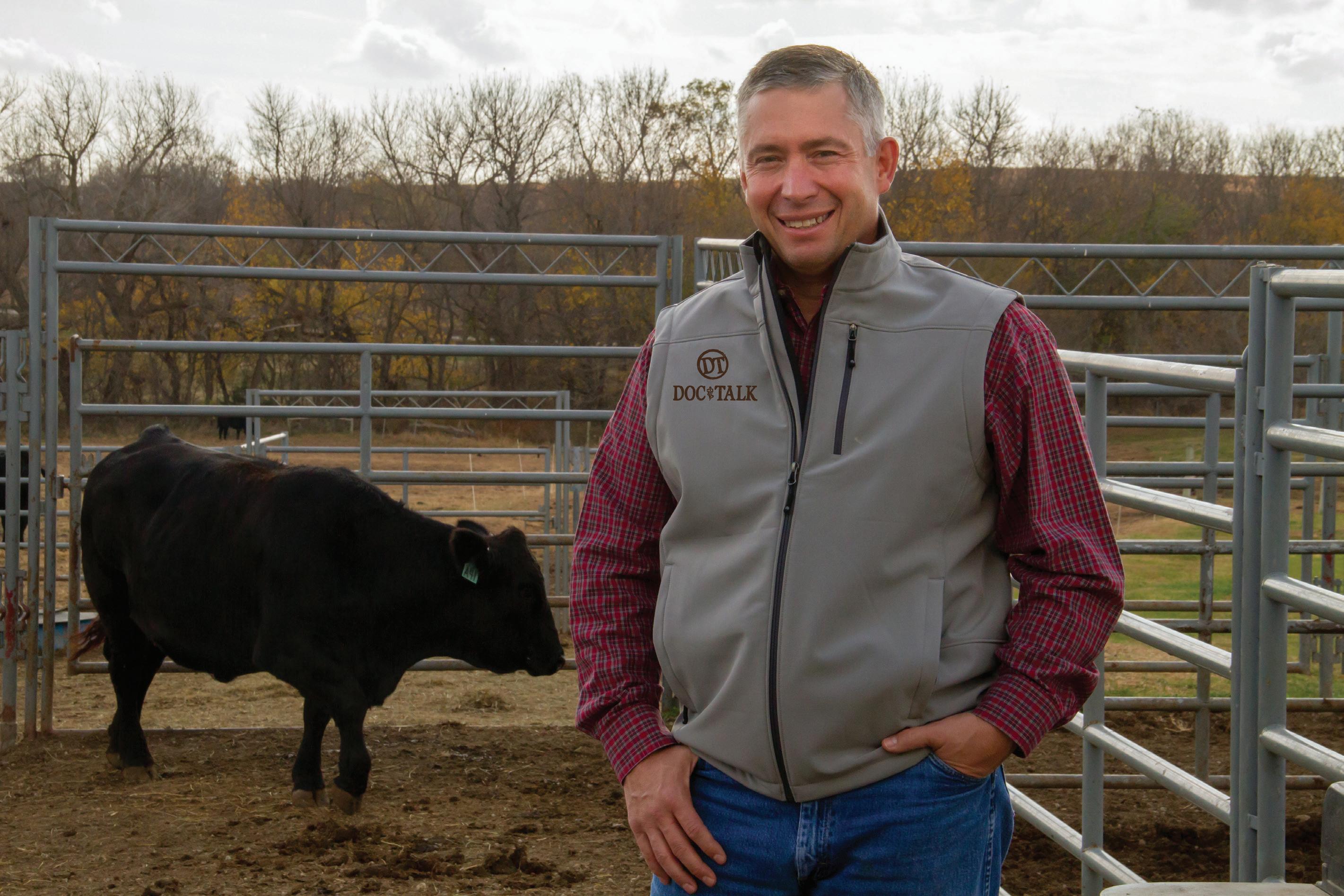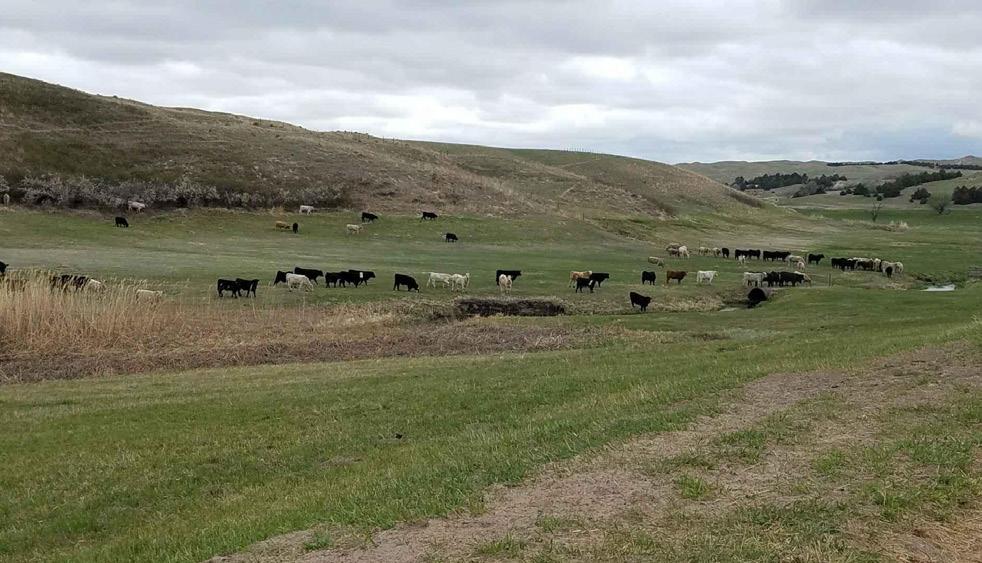
6 minute read
Nutrition Impacts Feedlot Health, Part 3: Receiving Nutrition
By: Jeremy Martin, PhD, Great Plains Livestock Consulting Inc. and Zeb Prawl, Zinpro
So far in this series, we have looked at prenatal and preweaning nutrition and how that affects the later feedlot performance of calves. Nutritional management during the receiving phase at the feedlot is often debated between feedlot personnel, nutritionists and veterinarians – and is the phase that is probably the highest stress for both calves and the people responsible for their well-being.
In a perfect world, all calves received at a feedlot would be from well-managed cowherds with no shortage of nutrition or immunization prior to arrival and would possess the disposition, genetics and health status we all desire. Since that will likely never happen for us, this article focuses on how we can do the best job of receiving cattle that are unweaned prior to arrival.
Regardless of your specific nutrition program, cattle comfort is a key point in receiving calves. This begins with access to fresh, clean water immediately after unloading. Your first contact with the calves during unloading, weighing, and penning is an opportunity to both evaluate the cattle and begin to acclimate them to your feedlot and your crew.
Do not take these steps lightly. Discuss them with your consultants to ensure the comfort and health of the cattle is being maintained at every step. Pens should be well prepared for new cattle with manure removed, holes filled and bunks and tanks clean. If pen conditions are less than ideal due to moisture, provide bedding so calves stay clean and dry. In the summer, bedding calves as an aid in preventing heat stress may be a good idea if shades are not present.
In terms of nutrition, the first step is just getting calves to eat, and they generally will not eat if they are thirsty. Make sure calves are finding the tanks and are willing to drink out of them. You may have to utilize tanks similar to what calves are accustomed to in some cases. The next step should be to get the calves an initial feeding of clean, highly-palatable grass hay free of mold, stickers and dust. This stimulates intake, helps calves find the bunk and helps equalize differences in gut fill to make sure calves are all starting on a level playing field.
Protein concentration in receiving rations varies substantially based on feedstuffs available, but protein generally needs to be higher in receiving rations to account for the limited intake expected from newly weaned calves.
Review of data comparing protein source and concentration in receiving rations (Galyean et al, 1999) did not identify a source of protein more likely to keep calves healthy or produce improvements in average daily gain (ADG) or feed efficiency (FE) maintained throughout the feeding period.
Data (Galyean et al, 1993) comparing 12, 14 or 16% protein receiving rations with protein from soybean meal indicated improved performance for the higher protein ration, but feeding the 16% protein ration also resulted in increased morbidity during the receiving phase when fed to 400 lb calves. Further analysis of this and other data indicates BRD morbidity increases with increasing protein concentration above 14% from a variety of protein sources. Feeding protein lower than 14% in these trials also produced higher BRD morbidity than the 14% ration, indicating maintaining protein at 14+/-1% would be the optimal range for receiving calves.
Energy concentrations of rations for receiving cattle should be viewed more from a roughage inclusion basis rather than a strict Net Energy for Gain (NEg) number. With variations in NEg values of certain byproducts available for feeding, it is hard to get a truly accurate reading on dietary energy levels in starting rations when using the Net Energy system. Rather, a level of roughage vs. concentrate in these diets has proven to be more effective in helping to predict both intake and performance of newly received cattle.
When formulating rations for incoming cattle, age and type of cattle can and will make a difference. Calves will require a slightly higher roughage level in the diet as compared to yearlings. In either case, a starting ration that contains 2550% roughage has been shown to do the best job at getting cattle on feed while also minimizing receiving period health risks in light, high risk, incoming calves (Rivera, et al, 2005). When breaking it out by type, calves should be closer to the 40-50% roughage level in the starter diet while yearlings can better handle diets in the 25-40% roughage level. Additionally, work done by Berry and others (2003) showed that varied starch and energy levels in the starting diets did not significantly affect starting cattle performance or health. This proves that one does not have to have a moderate level of corn in the starter diet to get calves to eat and/or gain during this period.
Additionally, not having a relatively high amount of corn in the starter diet might tend to make those diets a little “safer”. This could lead to less cases of acidosis during the starting phase, which not only will increase performance during the first 30-60 days on feed but also well into the finishing period as rumen integrity, including health of the rumen papillae, will be better. So, when looking at these two major areas of ration formulation, one can use a wide range of high quality ingredients to formulate the starter diets and achieve desired animal performance.
Minerals often are some of the last nutrients considered when formulating starter diets for calves; however, they are very important. Calcium and phosphorus should be in a balance somewhere between 1.5:1 to 2:1 in the final diet. With today’s high usage of grain by-products, particularly corn by-products, no supplemental phosphorus is usually needed in diet formulations. However, calcium does need to be supplemented to overcome the ratio imbalances. Magnesium and potassium should also be considered for newly arriving calves to help replenish electrolytes and cellular fluid balance in the body. Salt should also be considered for these same reasons, but salt levels should not exceed 0.450.5% in the diet.
Trace mineral nutrition continues to be an area of incoming calf health programs gaining more and more attention. The value of a good trace mineral program in all phases of beef cattle production has shown to have very positive effects on performance.
This is certainly true in receiving cattle. NRC recommendations of 30 ppm zinc, 10 ppm copper, 40 ppm manganese, and 0.1 ppm selenium are proving to be the bare minimums to maintain cattle without showing signs of deficiency. Higher levels of each of these minerals in the diet are proving to improve performance, particularly when coming from an organic, complexed source. The use of complexed, organic trace minerals in place of traditional inorganic sources in a 28-day starting program with high risk calves has been shown to cut morbidity rates in half while also increasing gains by as much as 0.42 lb/day (Dorton et al, 2006). The continued use of these products, particularly zinc, also improve finishing performance of the cattle later in their lives, therefore capturing value and carrying it all the way until harvest.
Vitamins play an important role in starting cattle performance but are some of the least researched nutrients when it comes to this stage of production for cattle. Rates of 60,000-100,000 IU/day of Vitamin A should be given to the calves. Vitamin D should be provided at 6,000-10,000 IU/day. Since Vitamin E has shown to contain antioxidant properties, higher feeding levels of it could have benefits to getting a boost in the immune system and fighting bacterial infections. Levels from 200 to 700 IU/day can be fed in newly received cattle.
The one area that should be monitored closely after the ration formulation is the ration delivery. It is better to underfeed a well formulated starter diet rather than overfeed it. A patterned approach should be taken that introduces the starter feed to a newly arrived calf and keeps them on a steadily increasing plane of feed intake for the first 21-28 days, rather than just trying to get them to eat all that they will clean up in a day. Specific goals for intake in newly arrived calves to the feedyard would be 2.0% of body weight in Dry Matter Intake by day 10, and then to at least maintain that level. For yearlings, this number could higher, such as 2.3%. There should also be guidelines put in place that limit the increase in feed offered from one day to the next. An example of this might be no more than a 10% increase in amount of dry matter offered to an animal from one day to the next.

Following these guidelines will result in unweaned calves not only getting on feed easier and quicker but also remaining healthier while performing better both in their first 30 days on feed and later into the finishing period.

Chuckles










